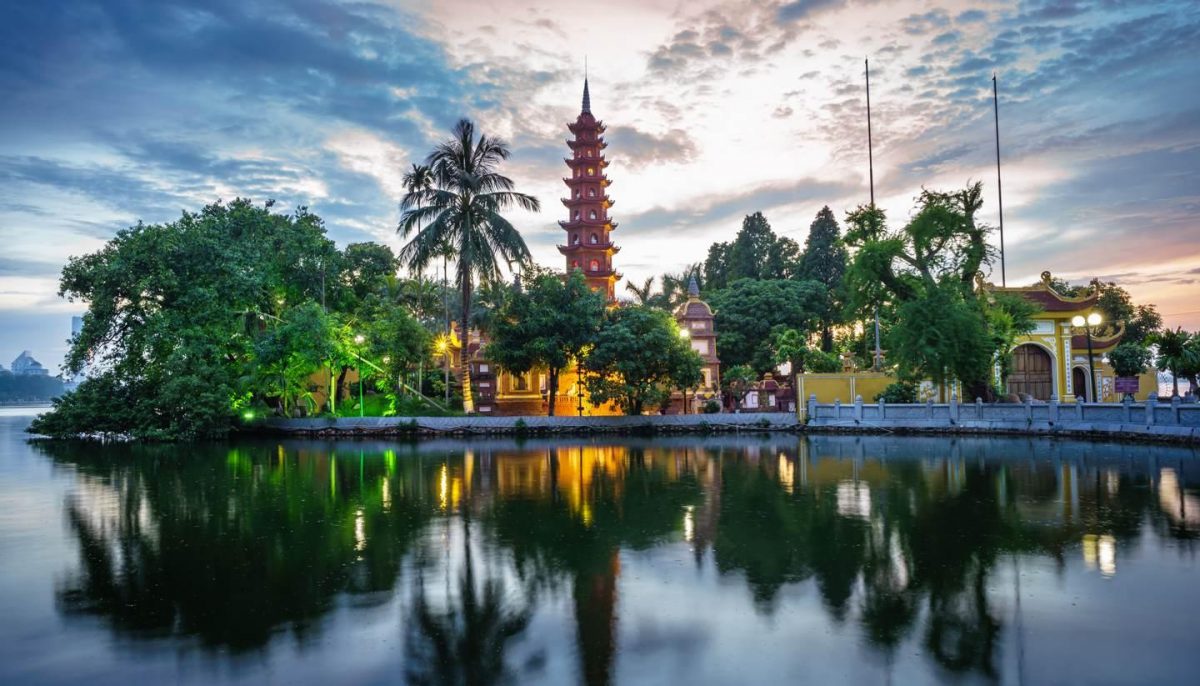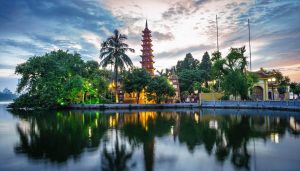Located in the east of West Lake, Tran Quoc Pagoda; with an age of over 1500 years; is the oldest and most sacred pagoda in Hanoi.
Formerly the Buddhist center of Thang Long under the Ly – Tran dynasties, Tran Quoc Pagoda has now become an attractive spiritual destination in the capital; attracts a lot of tourists to visit and worship every year.
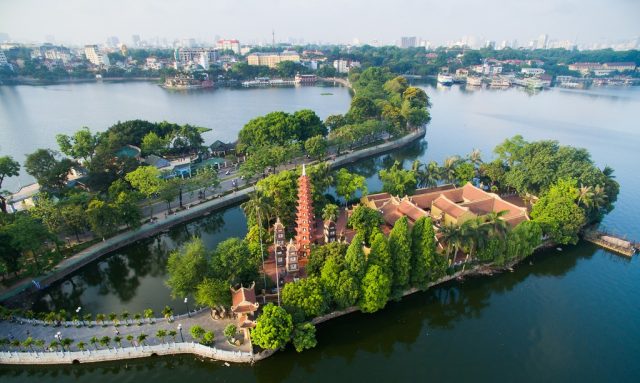
Tran Quoc Pagoda from above
In particular, in 2016, Tran Quoc Pagoda has included in the list of 16 most beautiful temples in the world voted by British Daily Mail.
History of Tran Quoc Pagoda
Tran Quoc Pagoda was originally named Khai Quoc Pagoda; built-in 541 in the Tien Ly period.
At that time, the pagoda was located near the banks of the Red River; so when the dyke fell in 1615 (the reign of King Le Trung Hung), the pagoda was moved to the Yen Phu dyke on the Kim Nguu mound. Then, in the 17th century, Lord Trinh built the Co Ngu dyke (now Thanh Nien road) to connect with Kim Nguu island.
The pagoda was renamed Tran Quoc pagoda in the reign of King Le Hy Tong (1681 – 1705); with the meaning that it would be a place to help people ward off natural disasters and bring a peaceful life to the people. And that name is used to this day.
In the past, Tran Quoc Pagoda was the Buddhist center of Thang Long Citadel. The Ly and Tran kings still used to go sightseeing and worship at this pagoda; Therefore, many palaces were built to serve the rest of the king; such as Thuy Hoa palace, and Ham Nguyen palace.
The architecture of Tran Quoc Pagoda
The pagoda is located on an island east of West Lake; nestled quietly on the busy Thanh Nien street. As an ancient temple built a long time ago, Tran Quoc Pagoda has undergone many restorations; a somewhat changed appearance; the size and architecture of the pagoda are now the result of a major restoration in 1815.
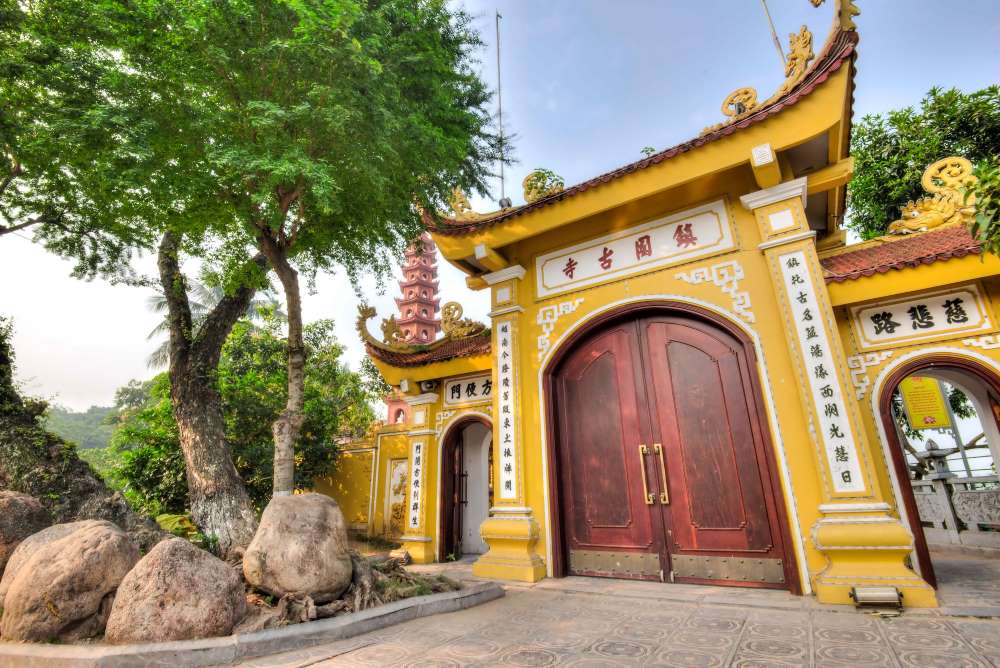
Tam Quan Gate. Photo: Toàn Dũng Media/VOV.VN
The total area of the pagoda is more than 3000m2; including the tower garden, the ancestral house, and the upper house.
The pagoda belongs to the Tonkin sect with its structure and architecture following strict Buddhist principles; consists of 3 main houses:
The front house, the burnt house, and the upper house are connected to the shape of the word “Gong” in Chinese (工).
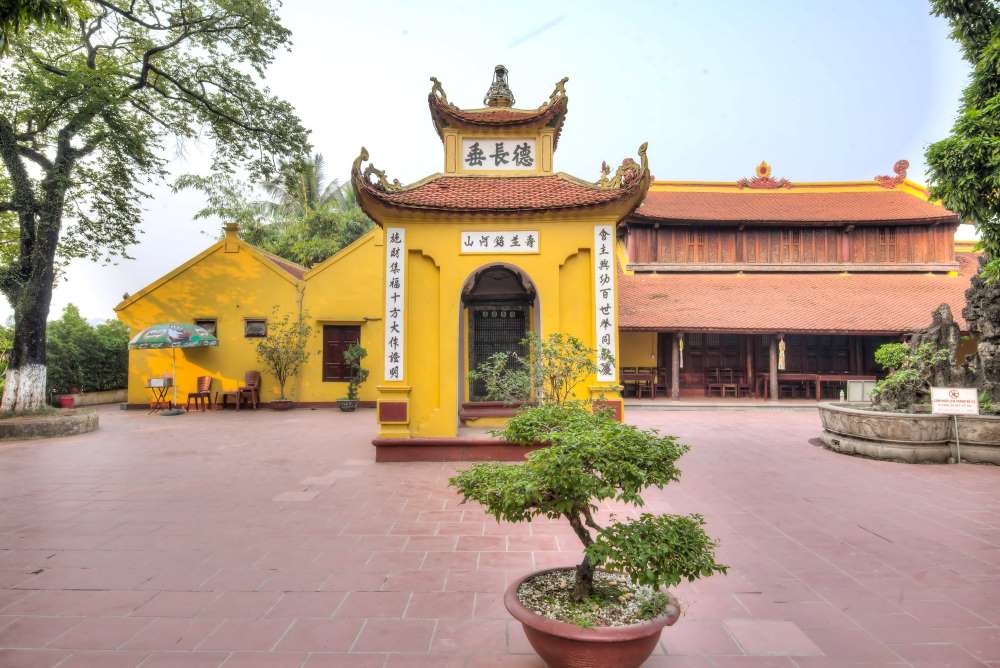
Photo: Toàn Dũng Media/VOV VN
Currently, the pagoda still preserves many statues of Buddha and Bodhisattva of great value, which are mainly located in the Upper Palace.
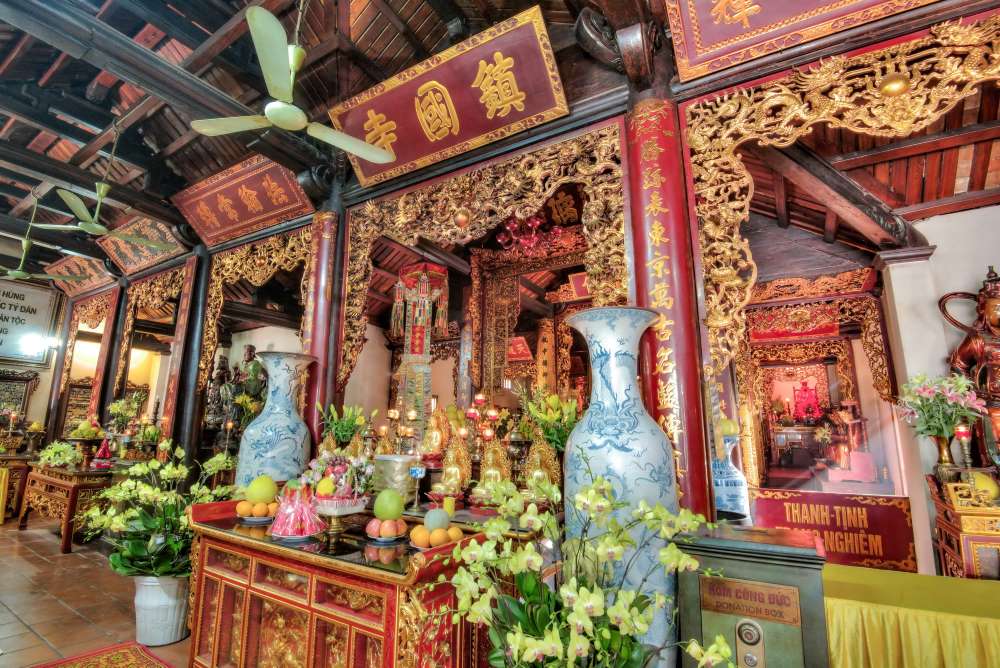
Photo: Toàn Dũng/Media VOV VN
In which the most prominent is the statue of Buddha Shakyamuni made from wood painted with gilding; and a beautiful statue of Nirvana in Vietnam.
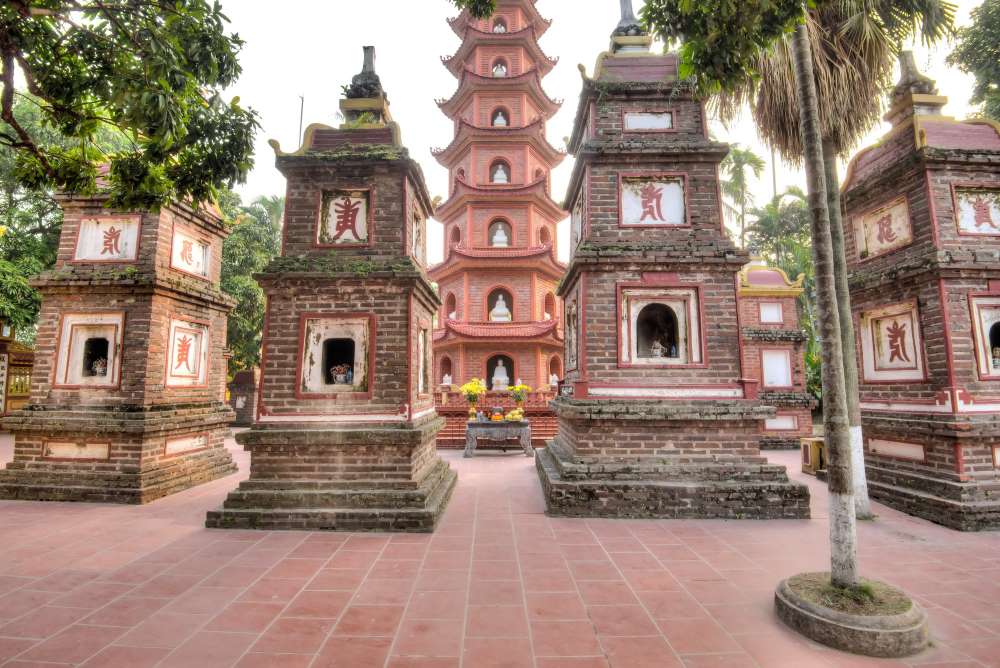
Behind the temple, there is an ancient tower grave from Vinh Huu and Canh Hung ( 18th century). Photo: Toàn Dũng Media/VOV.VN
Through many ups and downs of time, Tran Quoc Pagoda is still majestic, peaceful, and ancient in the heart of busy Hanoi.
Every year, the pagoda attracts a lot of Buddhists from all over the world; domestic and foreign tourists come to offer incense, worship Buddha as well as visit the pagoda.
Where is Tran Quoc Pagoda
Tran Quoc Pagoda is now located on an island in the East of West Lake, at the end of Thanh Nien Street, in Yen Phu Ward, Tay Ho District, Hanoi.
How to get to Tran Quoc Pagoda
Tran Quoc Pagoda is located in the West Lake area, so you can easily choose means of transportation such as motorbike, taxi, walking, or bus to visit this temple.
- If you go by private vehicle, there is a parking space right at the temple.
- There are 2 bus routes to move to the temple that is both convenient and fast: bus route number 33 (Yen Nghia bus station – Xuan Dinh) and bus route number 50 (Long Bien – National Stadium).
Opening hours & Ticket price
Opening hours:
- Weekdays: 8 am – 4 pm weekly, especially on New Year’s Eve, the pagoda is open all night.
- The 1st day and the full moon day of the lunar calendar: 6 am – 6 pm
Entrance fee: FREE.
Best time to visit Tran Quoc Pagoda
Located in the heart of Hanoi city, Tran Quoc Pagoda is a sacred ancient temple visited by many people in the capital to burn incense. Every month on the 1st or 15th of the lunar calendar, monks and nuns and Buddhists return to the temple to burn incense, go on excursions, make pilgrimages, and pray to Buddha.
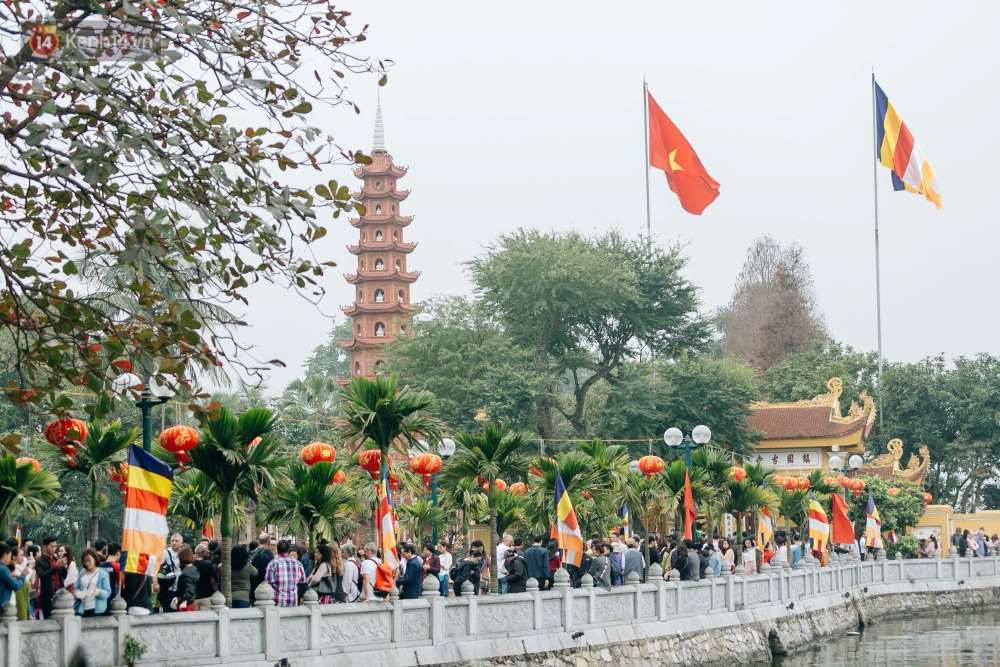
Tran Quoc Pagoda on New Year’s Day
On the occasion of the Tet holiday, the pagoda is not only crowded with Hanoians but also tourists from all over the world. Besides, you can also combine visiting West Lake and Truc Bach Lake.
With a history of more than 1,500 years, Tran Quoc Pagoda is one of the most beautiful landscapes in Hanoi today. In addition, you can also visit the temple at any time of the year. If you don’t like crowds, you can come on a normal day of the month!
Tips
- Dress politely, casually, and elegantly, not wearing revealing or offensive clothes.
- Avoid causing disorder, do not use profanity or have an indecent attitude when visiting this place.
- It is not allowed to pick flowers, break branches or damage the landscape of the pagoda.
- It is necessary to maintain general hygiene and not throw garbage indiscriminately at this place.

